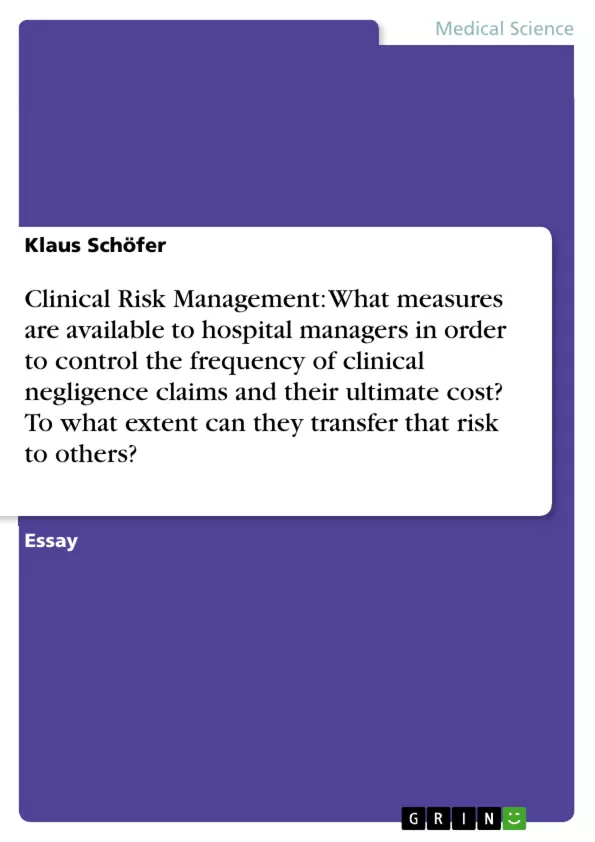The purpose of the present paper is to examine measures, available to hospital managers to control the frequency of clinical negligence claims and their ultimate cost. Moreover, the extent to which hospital managers can transfer that risk to others is inv
Inhaltsverzeichnis (Table of Contents)
- Introduction
- The Need for Clinical Risk Management
- Clinical Risk Management
- Financial Control
- Claim Management
- Claim Prevention
- The Transference of Risk
- Conclusion
Zielsetzung und Themenschwerpunkte (Objectives and Key Themes)
This paper examines the measures available to hospital managers to control the frequency and cost of clinical negligence claims. It also investigates the extent to which these risks can be transferred to others. The paper primarily focuses on the UK healthcare sector, drawing on examples and data related to its unique context.
- The increasing frequency and severity of medical negligence claims
- The impact of clinical negligence claims on hospital finances and staff morale
- The effectiveness of risk management strategies in reducing the incidence and cost of claims
- The role of insurance and other mechanisms in transferring risk
- The ethical and legal considerations surrounding clinical negligence
Zusammenfassung der Kapitel (Chapter Summaries)
The Introduction lays out the paper's objective to explore measures available to hospital managers for controlling clinical negligence claims and the extent to which these risks can be transferred. It outlines the paper's structure, dividing it into three sections: the need for clinical risk management, key aspects within clinical risk management, and the insurance-prevention trade-off related to risk transference.
The second chapter, "The Need for Clinical Risk Management," examines the escalating frequency and severity of medical negligence claims. It details the financial pressures faced by hospitals due to increasing insurance costs, particularly in the UK, where the National Health Service (NHS) was initially responsible for these costs. The chapter also discusses the broader impact of negligence claims beyond finances, highlighting the personal costs to patients and staff involved in adverse events.
The third chapter delves into the various aspects of "Clinical Risk Management." It defines risk management as the reduction of harm to an organization, primarily focusing on malpractice within a clinical setting. The chapter further breaks down clinical risk management into three key dimensions: Financial Control, Claim Management, and Claim Prevention.
Schlüsselwörter (Keywords)
This paper explores key concepts related to clinical negligence, risk management, healthcare financing, and legal liability within the UK context. It examines the impact of medical negligence claims on hospital budgets, the role of insurance and other mechanisms in transferring risk, and the importance of effective claim management strategies. It also delves into the ethical and psychological consequences of negligence for patients and staff.
- Citar trabajo
- Dr. Klaus Schöfer (Autor), 1998, Clinical Risk Management: What measures are available to hospital managers in order to control the frequency of clinical negligence claims and their ultimate cost? To what extent can they transfer that risk to others?, Múnich, GRIN Verlag, https://www.grin.com/document/185877



